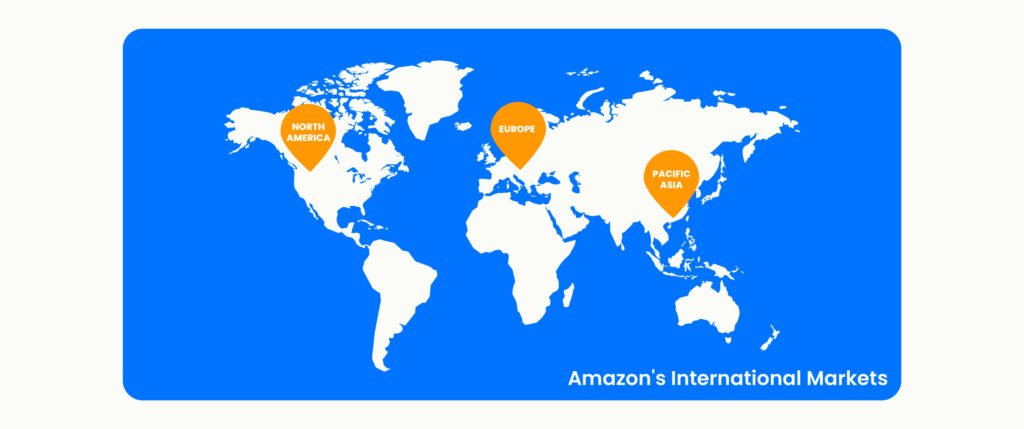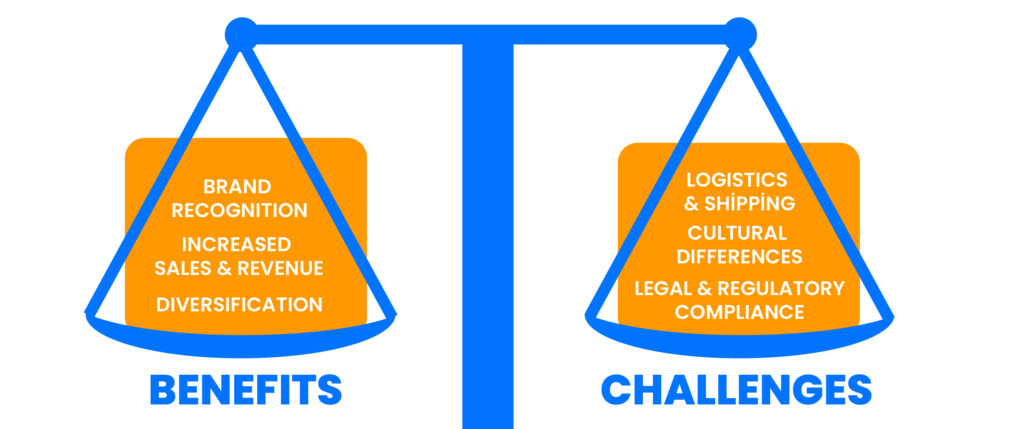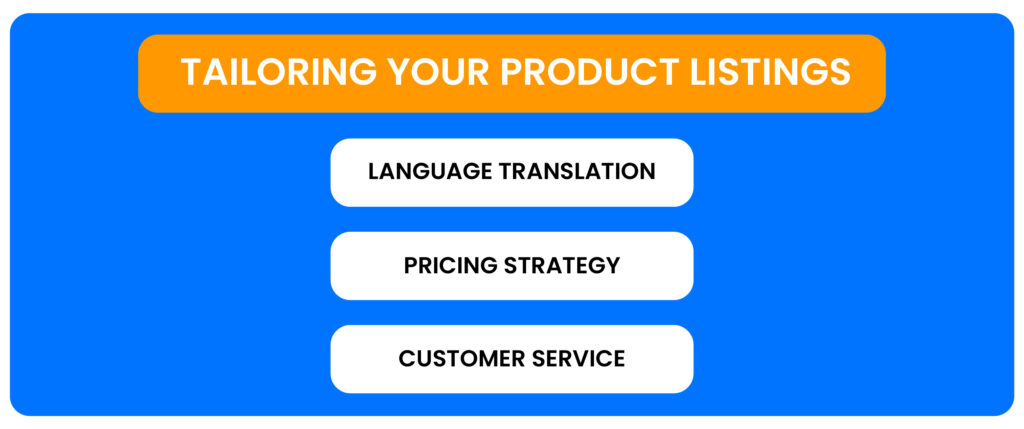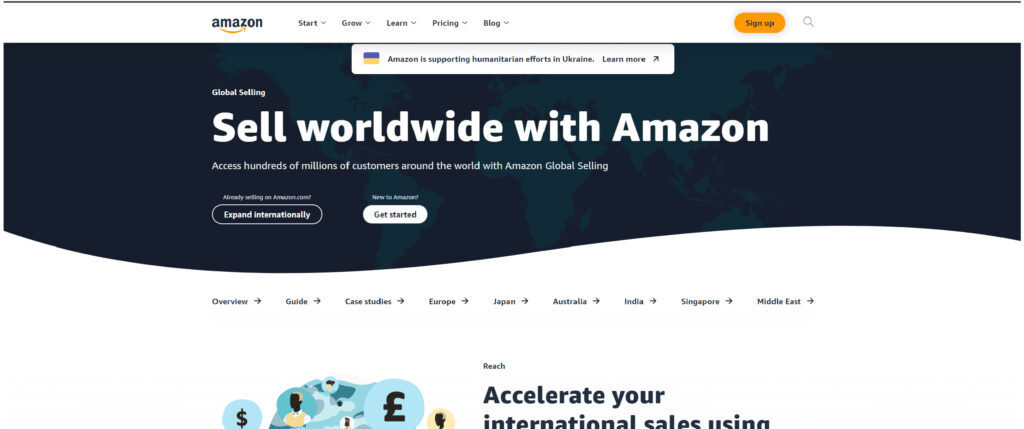Table of Contents
Introduction:
In the bustling corridors of Amazon’s virtual marketplace, the world is your oyster. But how do you crack open the shell to reveal the pearl inside? The answer lies in understanding Amazon’s international markets.
With over 300 million active customers, Amazon offers a vast, untapped reservoir of potential buyers. Expanding your business into international markets can be the key to unlocking unprecedented growth & profits. But it’s not without its challenges.
In this guide, we’ll explore the intricate maze of Amazon’s global market strategies, providing you with actionable insights & real-world examples. From understanding cultural nuances to navigating legal landscapes, we’ll guide you through every step of your international expansion journey.

The Landscape of Amazon’s International Markets
Understanding the Global Playground
Amazon operates in over 18 marketplaces across the globe. Each region comes with its unique characteristics, opportunities, & challenges. Here’s a breakdown of some key markets:
- North America: A mature market with high competition. The U.S. alone accounts for 47% of Amazon’s net sales, according to Statista (2022).
- Europe: Diverse cultures require tailored strategies. Germany & the UK are among the top markets, contributing significantly to Amazon’s international revenue.
- Asia-Pacific: Emerging markets with vast potential. Japan & Australia are growing rapidly, offering unique opportunities.

The Benefits & Challenges of International Expansion
Benefits
- Increased Sales & Revenue: Access to new customers can lead to significant growth. A study by Forrester (2021) showed that international expansion led to an average revenue increase of 10% for businesses.
- Diversification: Reduce dependence on a single market, mitigating risks.
- Brand Recognition: Enhance your brand’s global presence, building trust & loyalty.
Challenges
- Legal & Regulatory Compliance: Understanding local laws is crucial. Regulations vary widely, and non-compliance can lead to fines & legal issues.
- Cultural Differences: Tailoring your approach to fit local preferences is essential. Misunderstanding cultural nuances can lead to lost opportunities.
- Logistics & Shipping: Managing international shipping can be complex. Tariffs, taxes, & shipping regulations must be carefully navigated.

Strategies for Successful International Expansion
Research & Understand Your Target Market
Understanding your target market is the cornerstone of successful expansion. Consider factors like:
- Consumer Behavior: What do they buy? How do they shop? A study by McKinsey (2020) emphasized the importance of understanding local buying behaviors.
- Competition: Who are your competitors? What’s their strategy? Analyzing local competition helps in positioning your products effectively.
- Regulatory Environment: What are the legal requirements? Compliance with local laws is non-negotiable.
Tailor Your Product Listings
Adapting your product listings to suit local preferences is vital. This includes:
- Language Translation: Accurate & culturally appropriate translations are essential. Poor translations can lead to misunderstandings & lost sales.
- Pricing Strategy: Consider local economic conditions. A study by PwC (2019) highlighted the importance of pricing strategies in international markets.
- Customer Service: Provide support in the local language. Customer satisfaction is key to repeat business.

Leverage Amazon’s Global Selling Tools
Amazon offers various tools to assist in international expansion, such as:
- Amazon Global Selling: Simplifies listing products in different marketplaces. Utilizing this tool can reduce the complexity of managing multiple listings.
- Fulfillment by Amazon (FBA): Handles shipping & customer service. FBA can streamline logistics, allowing you to focus on other aspects of your business.

Frequently Asked Questions
Question 1: What Are The Key Considerations For Expanding Into A New Amazon Marketplace?
Understanding the local market, complying with legal requirements, adapting product listings, & leveraging Amazon’s tools are essential. Research & planning are key to successful expansion.
Question 2: How Can I Ensure My Products Comply With Local Regulations?
Engage with local experts or utilize Amazon’s compliance tools to ensure adherence to all legal requirements. Understanding local laws & regulations is crucial to avoid legal issues.
Question 3: What Are The Risks Of International Expansion On Amazon?
Potential risks include legal challenges, cultural misunderstandings, logistics issues, & increased competition. Proper planning & understanding of the local market can mitigate these risks.
Question 4: How Can I Optimize My Listings For Different Cultures?
Research local preferences, provide accurate translations, & offer localized customer support. Understanding cultural nuances & adapting your approach is key to success.
Conclusion:
Unlocking international markets on Amazon is a journey filled with opportunities & challenges. With the right strategies, insights, & tools, you can navigate the global landscape with confidence. Whether you’re a seasoned seller or a newcomer, this guide offers a roadmap to global success.
Ready to take the plunge? Dive into the world of Amazon‘s international markets & watch your business soar.
About Eva
Eva is an integrated AI platform & services provider that helps brands maximize traffic, conversion, availability, & profits from Amazon. With ex-Amazonians, end-to-end solutions & 3PL fulfillment capabilities, Eva proves to be the ultimate partner for brands selling through Vendor or Seller Central.








